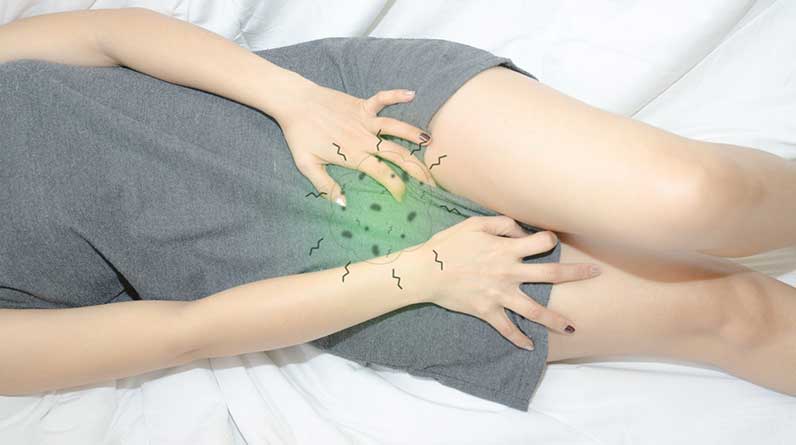Types of Vaginitis

Types of Vaginitis and its Causes, Risk Factors, Prevention, and Treatment
Vaginitis is defined as any condition resulting in inflammation of the vagina. Vaginitis symptoms can vary, ranging from asymptomatic to painful. In addition, the condition can be infectious or non-infectious.
There are several causes of vaginitis. They can involve bacteria or fungal infections, yet some cases are caused by ingredients found in topical creams and beauty products. In addition, some other conditions can lead to vaginitis, such as lack of estrogen, which causes atrophic vaginitis.
Women who are pregnant can develop an inflammatory case of vaginitis secondary to hormonal changes, and it can also occur with oral antibiotic use. Antibiotic treatment for another infection elsewhere in the body can affect the normal vaginal bacteria and allow for the overgrowth of yeast, leading to a yeast infection and inflammation.
Vaginitis can cause signs and symptoms of burning sensation, redness, vaginal discharge, and sometimes painful urination. It’s also important that sometimes the condition can exist with a simultaneous infection in the urinary tract. In this case, antibiotic treatment for the urinary infection will be necessary.
Types of Vaginitis
The condition of vaginitis causes symptoms of discharge, itchiness, burning sensation, a foul odor, or pain in the vaginal area. It is quite common and is usually something most women will experience during their lifetime.
The following are three main types of Vaginitis:
1. Bacterial Vaginosis
2. Trichomonas Infection (An STI)
3. Yeast Infection (candidal vulvovaginitis)
Bacterial Vaginosis
Bacterial Vaginosis (BV) is a type of vaginitis that is caused by an overgrowth or the imbalance of normal vaginal bacteria. The most common symptom of BV is a fish-like odor. If this occurs, it’s best to seek consultation with a medical professional as soon as possible. BV is usually treated with a course of antibiotics, such as metronidazole or clindamycin. However, the condition often recurs and may need repeat medical treatment. In addition, recurrent episodes may require prolonged suppressive therapy for up to 4 months.
Trichomonas
Trichomonas or trichomoniasis is an STI caused by a specific parasite known as Trichomonas Vaginalis. While both men and women can be the carrier of the parasite, many people are unable to tell that they have the condition due to a lack of symptoms.
When people experience symptoms with Trichomonas infection, they experience discharge, itchiness, pain during urination and sex, and even mild bleeding. However, symptoms can often vary, and sometimes they can stop occurring, which can make this condition more difficult to diagnose. It is treated with an oral antibiotic, typically metronidazole, which will eliminate the organism.
Yeast Infection
Otherwise referred to as candidal vulvovaginitis or candidiasis, yeast infections are fungal infections caused by bacterial imbalance that result in intense irritation surrounding the vagina and vulva. They can produce a thick vaginal discharge that can resemble cottage cheese. However, atypical forms of yeast can cause a thin white or yellow discharge.
Yeast infections are so common that 3 out of 4 women are expected to be affected at least once in their lifetime. They are common in the general population but may occur more often in women with diabetes or immunocompromised individuals.
How to Treat Vaginitis
Upon consulting with your gynecologist, the treatment prescribed will depend on the type and cause of the condition.
The following are the different treatments available for vaginitis:
- Antibiotics (usually oral or topical)
- Antifungal medications
- Estrogen Vaginal Creams or Vaginal Suppositories in cases of atrophic vaginitis
Be aware that the use of over-the-counter medications without the consultation of a gynecologist may cause worsening symptoms or be ineffective in treatment. The treatment for this condition must be the correct medication in order to obtain the desired outcome. It’s especially important to seek specialized care the first time this condition occurs because the problem may be due to another medical condition. If you become concerned, be sure to consult with your gynecologist.
If symptoms continue after treatment, it’s important to be reevaluated by your gynecologist. It may be necessary to have repeat testing to ensure that any infection is adequately treated. It’s also important to remember that the condition will likely recur if sexual partners are not treated.
Final Thoughts
Because vaginitis is such a common female condition, treatment has become widely available, yet the correct diagnosis is critical to treat the condition correctly.
Like most infections and conditions, vaginitis has distinct symptoms that can be quite uncomfortable. Because of this, it’s essential to pay attention to your body, understand the symptoms, and seek medical attention early to get treatment started right away.
The prevention of vaginitis is the ultimate goal, but it requires diligent attention to certain details, such as a healthy lifestyle and smart choices about sexual activity. In addition, remember that certain clothing and beauty products can contain irritative ingredients that cause a change in the hormonal balance of the vagina. Thus, attention to these details may help prevent this condition.




